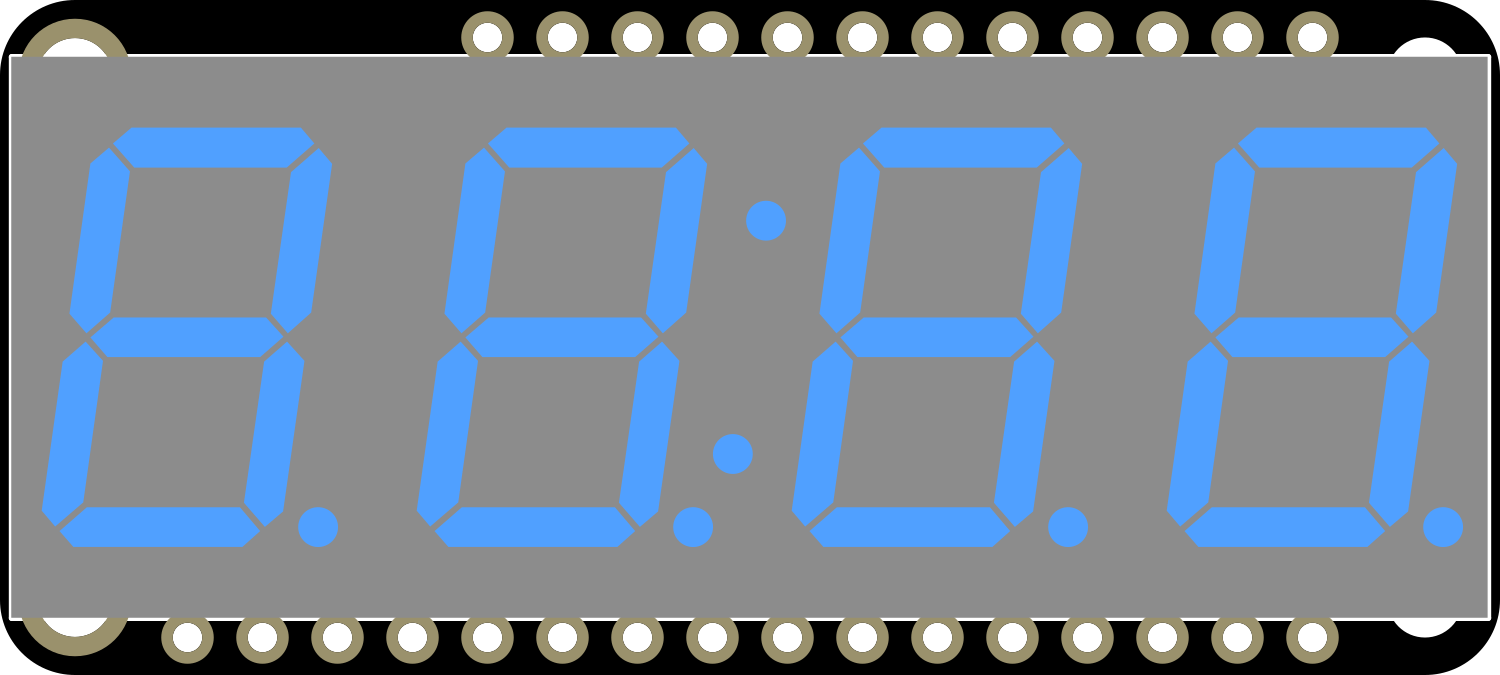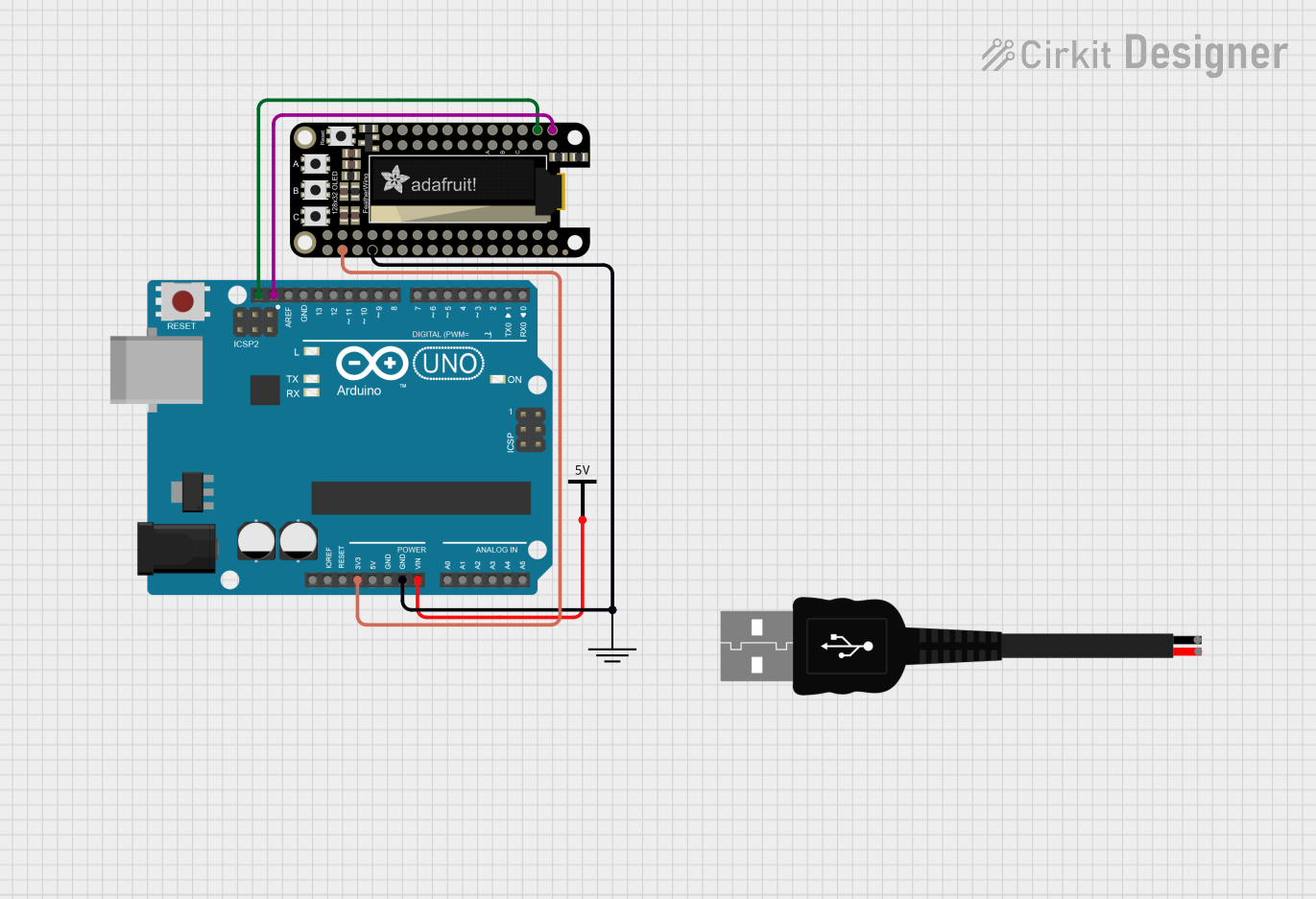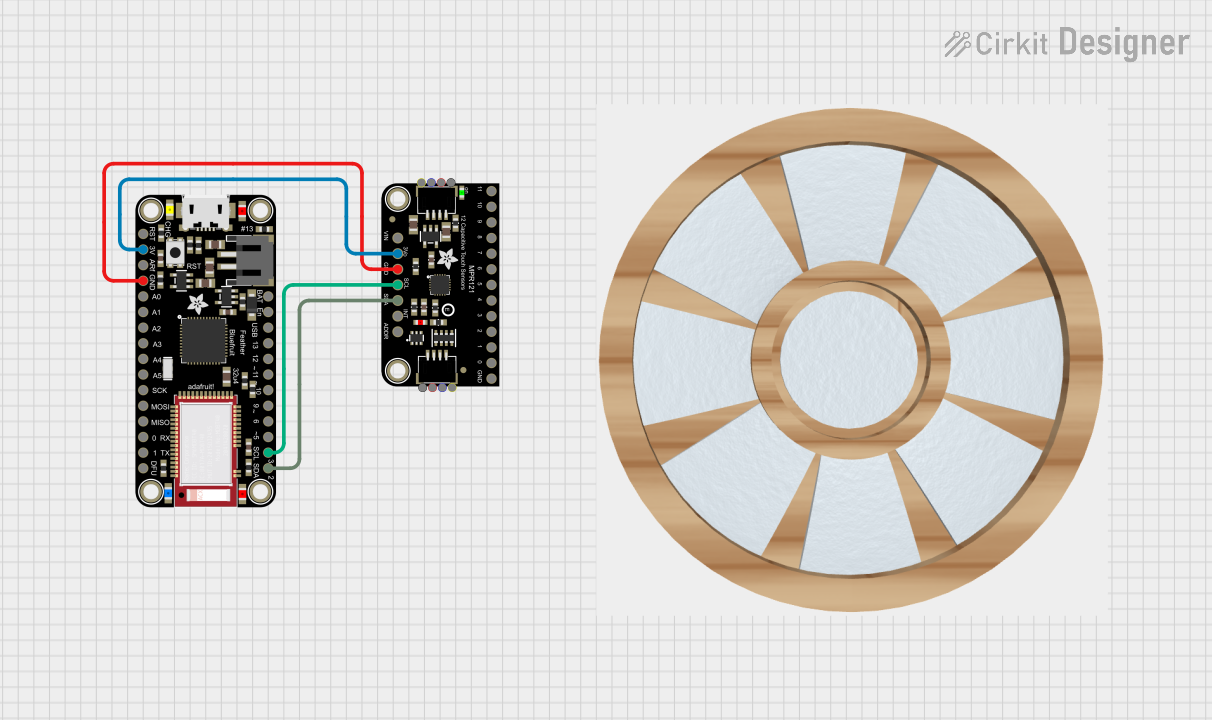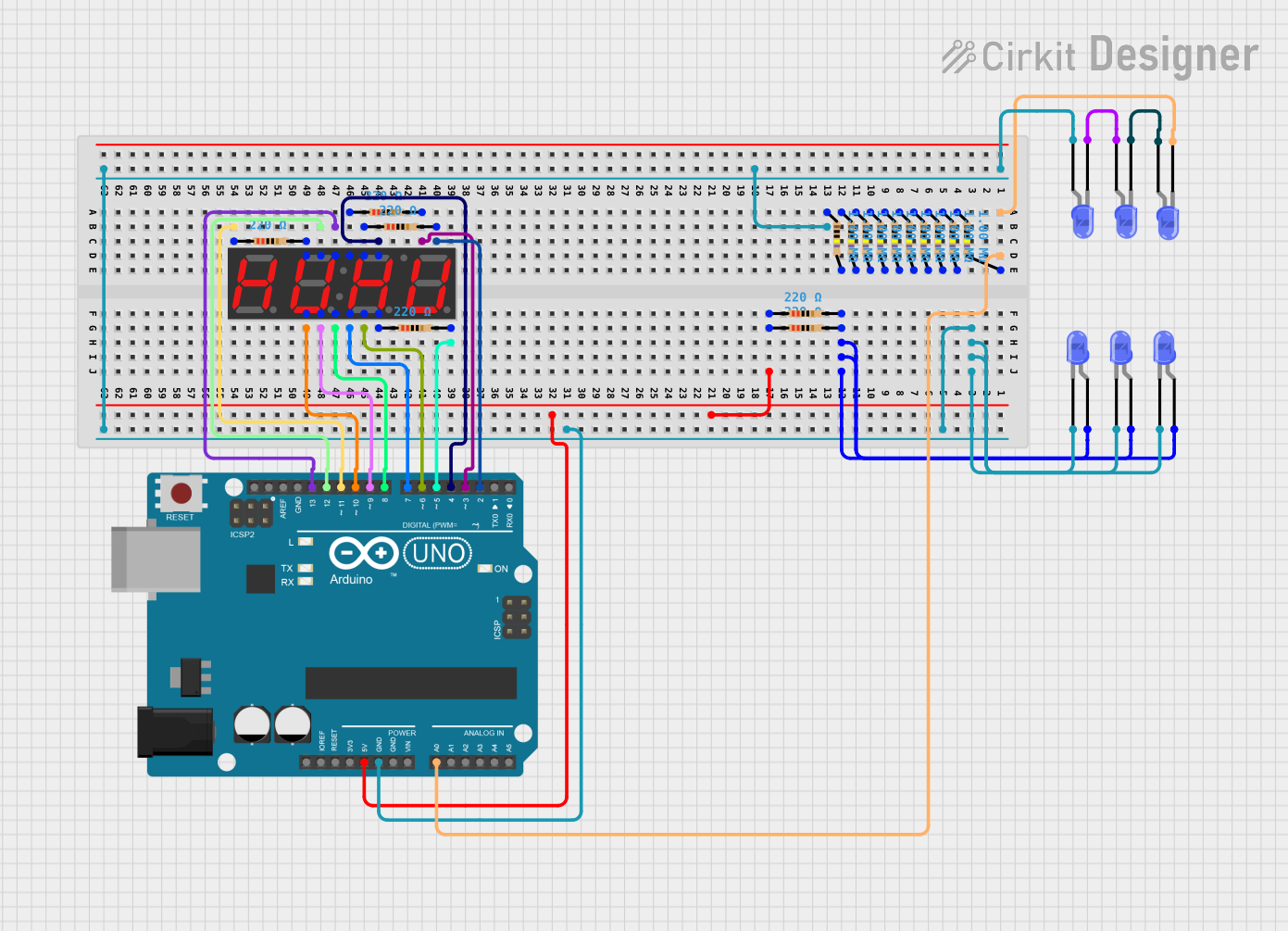
How to Use Adafruit 7 Segment FeatherWing - Blue: Examples, Pinouts, and Specs

 Design with Adafruit 7 Segment FeatherWing - Blue in Cirkit Designer
Design with Adafruit 7 Segment FeatherWing - Blue in Cirkit DesignerIntroduction
The Adafruit 7 Segment FeatherWing in Blue is a versatile and visually appealing electronic component designed to extend the capabilities of Adafruit Feather boards. This add-on module features a bright blue 4-digit, 7-segment LED display, which is ideal for displaying numerical information and simple alphanumeric characters. Common applications include clocks, timers, counters, and readouts for sensors.
Explore Projects Built with Adafruit 7 Segment FeatherWing - Blue

 Open Project in Cirkit Designer
Open Project in Cirkit Designer
 Open Project in Cirkit Designer
Open Project in Cirkit Designer
 Open Project in Cirkit Designer
Open Project in Cirkit Designer
 Open Project in Cirkit Designer
Open Project in Cirkit DesignerExplore Projects Built with Adafruit 7 Segment FeatherWing - Blue

 Open Project in Cirkit Designer
Open Project in Cirkit Designer
 Open Project in Cirkit Designer
Open Project in Cirkit Designer
 Open Project in Cirkit Designer
Open Project in Cirkit Designer
 Open Project in Cirkit Designer
Open Project in Cirkit DesignerTechnical Specifications
Key Technical Details
- Display Type: 4-digit 7-segment LED display
- Color: Blue
- Operating Voltage: 3.3V to 5V (matches Feather board voltage)
- Interface: I2C
- I2C Addresses: 0x70 (default), selectable with solder jumpers
- Dimensions: 51mm x 23mm x 5mm / 2.0" x 0.9" x 0.2"
Pin Configuration and Descriptions
| Pin | Description |
|---|---|
| GND | Ground connection |
| 3V | 3.3V power supply from Feather |
| SDA | I2C data line |
| SCL | I2C clock line |
| RST | Reset pin (optional use) |
Usage Instructions
Connecting to a Feather Board
- Align the headers of the 7 Segment FeatherWing with the corresponding pins on your Feather board.
- Solder the headers to establish a secure and stable connection.
- Ensure that the Feather board is powered off before making the connection.
Programming the Display
To use the 7 Segment FeatherWing with an Arduino UNO, you will need to use a base Feather board that is compatible with the Arduino IDE, such as the Adafruit Feather 32u4 or Feather M0.
Library Installation
- Open the Arduino IDE.
- Go to
Sketch>Include Library>Manage Libraries.... - Search for "Adafruit LED Backpack" and install the library.
Example Code
#include <Wire.h>
#include <Adafruit_GFX.h>
#include "Adafruit_LEDBackpack.h"
Adafruit_7segment matrix = Adafruit_7segment();
void setup() {
matrix.begin(0x70); // Initialize the display with its I2C address
}
void loop() {
matrix.print(1234); // Display a numeric value
matrix.writeDisplay(); // Refresh the display with the new data
delay(5000); // Wait for 5 seconds
// Display a hexadecimal number
matrix.print(0xBEEF, HEX);
matrix.writeDisplay();
delay(5000);
}
Important Considerations and Best Practices
- Always power off the Feather board before attaching or detaching the FeatherWing.
- Verify the I2C address if you are using multiple I2C devices to avoid conflicts.
- Use the provided library functions to control the display for ease of use.
Troubleshooting and FAQs
Common Issues
- Display Not Lighting Up: Ensure that the FeatherWing is properly seated on the Feather board and that there are no soldering issues.
- Garbled or Incorrect Output: Check the I2C address and ensure that there are no conflicts with other I2C devices.
- Dim Display: Verify that the power supply is adequate and within the specified voltage range.
Solutions and Tips for Troubleshooting
- Double-check all connections and solder joints for continuity and shorts.
- Use the
i2cdetectutility or similar tools to scan for the correct I2C address of the display. - If using multiple I2C devices, adjust the solder jumpers on the back of the FeatherWing to change the I2C address.
FAQs
Q: Can I use the 7 Segment FeatherWing with a 5V Feather board? A: Yes, the FeatherWing is compatible with both 3.3V and 5V Feather boards.
Q: How do I change the I2C address? A: Solder the address jumpers on the back of the FeatherWing to configure a different I2C address.
Q: Can I display letters on the 7 Segment FeatherWing? A: Yes, the display can show simple alphanumeric characters that fit within the 7-segment format.
For further assistance, consult the Adafruit support forums or the product's FAQ section on the Adafruit website.